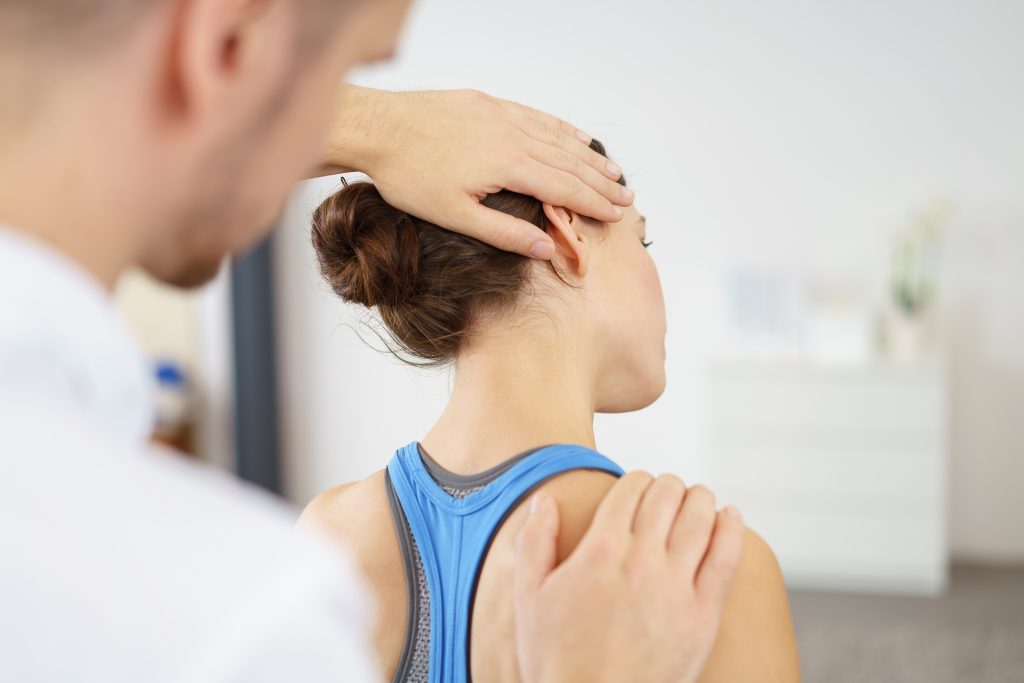Beginner’s Guide To Physical Therapy: What To Expect

Our clinic provides physical therapy for a wide range of conditions, such as post-surgery recovery, general aches and pains, spine degeneration or injury, hip, knee, and ankle injury, sports rehabilitation, work injuries, and more.
Really, physical therapy is a form of physical medicine and utilizes a deep understanding of how the body functions biomechanically to improve your pain and function.
Our expert staff tailors your physical therapy to your abilities and treatment goals. If you are a surgical patient of Warner Orthopedics & Wellness, you benefit from how closely our physical therapy team communicates with Dr. Meredith Warner and Dr. Kyle Lindow – ensuring that you get treatment tailored to your specific needs.
The Goal Of Physical Therapy
After you experience an injury or have a change in lifestyle from degeneration or pain, recovery and management of your condition is paramount to ensuring that you retain or improve your mobility. Mobility is one of the keys to optimal aging and function.
The way that you treat your condition dictates the way your body adapts over time. We strongly believe in the adage ‘a body in motion stays in motion; a body at rest stays at rest.’ Like most of these sayings, there is truth to it.
We want to help keep you moving. Physical therapy is key to our strategy for improving your health.
At Warner Orthopedics, our goal is to enhance your long-term health through wellness benefits. Not only do we do our best to improve or restore your mobility and reduce your pain, we also teach you how to prevent future injuries and give you the tools to self-manage your condition at home, when appropriate.
Each treatment technique we offer is designed to promote movement, reduce pain, and get you back on your feet.
Types Of Physical Therapy Offered At Our Clinic
1. Manual Therapy.
Manual Therapy is a form of physical therapy that involves the practitioner placing pressure on muscles and manipulating joints to relieve pain, decrease muscle spasms and tension, and more. It is especially helpful for those experiencing back pain.
There are two types of manual therapy: soft tissue work and mobilization/manipulation.
Soft tissue work includes therapeutic massage. This pressure can aid in improving circulation, relaxing muscles, breaking up scar tissue, and easing pain in soft tissues.
Mobilization techniques use specific movements that vary in speed and force to pull, push, or twist bones or joints into their correct alignment. This type of manipulation can help to loosen tight tissues around a joint that are restricting movement and can help with flexibility and alignment.
2. Dry Needling
Dry needling is an effective way to relieve tension in muscles for the treatment of pain and improvement of mobility issues.
This type of therapy involves thin needles being inserted into specific muscle groups to release tension, perform deep massage, and promote healing. The focus of dry needling is centered on targeting trigger points. A “trigger point” is a taut band of skeletal muscle located within a larger muscle group that is often tender to the touch.
This dysfunctional muscle group can cause pain and make the surrounding muscles and fascia limit movement. When you undergo a dry needling procedure, this tension and pain is released, allowing for better movement and reducing pain. Dry needling has been massively effective for the very common aches and pains around the spinal column.
3. TENS Machine.
A TENS (transcutaneous electrical nerve stimulation) machine is used as an alternative to painkillers. It sends small electrical pulses through the skin to the peripheral nerves in the painful part of the body. These electrical signals are thought to affect the way pain signals are sent to the brain via nerves.
The theory behind the TENS machine is that the small electrical pulses will block pain signals from the area being treated – and the brain will receive fewer signals from the source of your pain, resulting in a reduced sensation of pain.
It is also thought to stimulate the body to make its own pain-relieving chemicals – called endorphins.
When you use a TENS machine, you’re hooked up to a small box that produces electrical pulses. Attached to this box are wires, and these wires are connected to the skin by sticky, single-use pads.
The machine is turned on and then the pulse setting is turned up until you feel a tingling sensation. The sensation will be strong, but not painful. This is a portable, safe and non-addictive method of treating pain.
If you are looking for a non-invasive method of treating your pain or restoring function, click below to make your appointment with our physical therapy team today!





